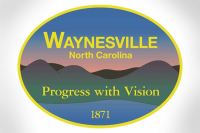Creative arts building back for more contingency funds
A feeling of déjà vu swept over the Haywood County Board of Commissioners meeting Monday as they reviewed more than $19,000 worth of changes to the Haywood Community College’s creative arts building project.
These were not the first, or even the second, design issues that have arisen during the already controversial project. The construction has racked up more than $300,000 in changes, which has left the commissioners wondering how much more money they will have to shell out and, more importantly, how much of that they will get back.
The project is still within its $10.2-million budget. A contingency fund was built into the price tag to cover unexpected costs that crop up during the course of construction. There is still more than $300,000 in the fund.
The conversation between the commissioners and Bill Dechant, HCC’s director of campus development, seemed rehearsed the third time around as Dechant described some additional work that needed to be done to a steel structural column.
“Was this a design error?” asked Board Chairman Mark Swanger.
“It was a design omission,” Dechant said.
Related Items
“It will be taken up with the architect?” Swanger then queried.
“Yes,” Dechant replied on cue.
The college has already begun negotiations with the architect regarding mistakes that have arisen during the project. Architects from the Raleigh-based Innovative Design have taken responsibility for some of the problems, and HCC hopes that the firm will reimburse the county for the cost of those errors.
Commissioner Kirk Kirkpatrick asked the college to provide the board with updates on the reimbursement negotiations with the architectural firm and a local surveyor.
“I really hope you all put the pressure on the architect and the surveyor,” said Commissioner Mike Sorrells.
Dechant moved onto the priciest of the three change orders, re-grading and repaving a parking lot — a nearly $16,500 cost. The revision was to solve drainage problems that resulted from a lack of information on a topographical survey.
It was not an omission or an error, Dechant said. “It just did not have enough detail.”
However, Commissioner Kevin Ensley, a surveyor by trade, said the survey should have included enough information to prevent the problem.
“They should have gotten that information. A survey should pick this up,” Ensley said. “It’s an omission.”
When asked who the surveyor was, Dechant laughed uncomfortably and admitted that he could not recall at that time. The same survey led to additional costs last month related to the repaving of a sidewalk to prevent other drainage problems.
Although the commissioners seem increasingly exasperated by the repeat visits, Dechant repeated that the amount of revisions is minor considering the scope of the $10.2 million project.
“It’s a complex building, and we have had very few change orders considering,” Dechant said.
It looks like even more change orders are in the cards, however. Another round of change orders were considered by the college’s Board of Trustees at their meeting last week — six change orders in all valued at nearly $12,000.
Change orders first go through the college trustees, then on to the commissioners, so commissioners are likely to get this next batch eventually. The list also reflects more than $7,000 in savings because of various changes to the project.
In January, Dechant went before the Haywood County Board of Commissioners seeking approval to use more than $262,000 in contingency funds. Most of it went to a water pump needed to provide adequate water pressure for the building’s sprinkler system.
Architects from Innovative Design erred when studying the water pressure earlier in the planning process. They tested the pressure in the main water lines running through campus a few hundred feet below the building site. As water flows up the hill to the new building, it loses pressure — a fact the architect did not factor into his plans, Dechant said at a previous commissioners meeting.
In April, he returned to the Board of Commissioners asking for a little more than $25,000 to widen a doorway, reinforce an outside deck and construct a retaining wall as well as pay for a couple of minor miscellaneous items.
Last year, the commissioners and college administrators battled for months about the scope of the creative arts building project, before settling on a plan. Commissioners insisted that the college slash the price of its plans, while administrators argued that the building construction and amenities had been whittled down enough already.
The new facility will house studio and classroom space for students studying the creative arts, such as pottery and woodwork.
Money to pay for the new building is coming from a quarter-cent sales tax approved by county voters more than four years ago to fund improvements to Haywood Community College’s campus.









